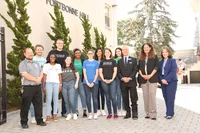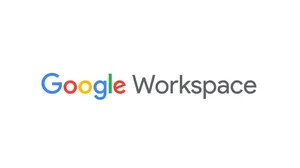A progress report with Google Classroom's first school

Five years after Google Classroom first showed up in schools, teachers are looking back at the tool that forever changed how they organize their classes and communicate with students. Out went the long hours standing at the copy machine; in came instant feedback, easy quizzes and “do now” assignments and more engaged students.
To celebrate Google Classroom’s fifth birthday, we asked two faculty members from Fontbonne Hall Academy, a private high school for girls in Brooklyn, New York about their early days as one of Classroom’s beta testers, and what school life is like five years later. (Just getting started with Classroom, or need a refresher? Visit g.co/firstdayofclassroom and g.co/classroom/help to study up.)
What was teaching like at Fontbonne before Google Classroom?
Jennifer McNiff, social studies teacher: I periodically think about what my life was like before, and I break out into a cold sweat. What I think about is how much prep we had to do, like printing out assignments and getting them to the kids.
Mark Surdyka, director of technology: I used chalkboards and had kids write everything down in notebooks. I’d give kids assignments and grade them, and then those papers would get thrown in the trash. There was tons of paper wasted, and the prep time was ridiculous.
Right now, I’m teaching an AP math course, and I think I printed out only one thing—some instructions on how to log in to Classroom. That was it. We do everything else in Google Drive instead of wasting time writing things down. Everything is shared faster. And our photocopiers don’t get so beaten up like they used to.
I’m sure you don’t miss all that prep time and paperwork! What does this mean to you as teachers?
Jennifer: It’s nice now because I don’t have to worry about using my prep time for mundane tasks like making photocopies. I can focus on lesson planning and getting right to work with students collaboratively, instead of waiting to give them handouts.
Mark: It’s part of our routine now. If we were without it, I don’t know what we’d do—it would feel like we were going back in time 20 years.
Were people nervous about using Classroom at the beginning?
Mark: There’s always fear of the unknown. People didn’t know what to expect, so they were hesitant to jump in with both feet. We were lucky to have a teacher do an early test of what is now called Classroom. We were able to take a collective deep breath and assure ourselves this would be a good experience.
Jennifer: I remember that my biggest fear was that if my assignments were all online in Classroom instead of written down, that I’d forget about them. But that didn’t happen—teachers are good at remembering what they’ve assigned.How have you gotten creative with Classroom?
Jennifer: I use it even for simple things, like my “do now” assignments that I give to kids as soon as they walk into the room. It’s so much easier now to get students starting on something right away, and getting comments from them right after they sit down.
I also teach AP Psychology, and I structure it like a college class—we work together collaboratively as well as have lectures. I created slide templates in Classroom so that students can take lecture notes in them, and also see graphs and videos that I put there. It really helps move along the lectures so that students understand the material better. I love having all the content in one spot.
Any advice for schools that are just starting to use Classroom?
Mark: In one word, play. You’re not going to learn anything about Classroom unless you sit there and play around with it. The more you start playing with all the features, like making copies for students assigning projects, you won’t fully realize what’s there and how it can help you.






